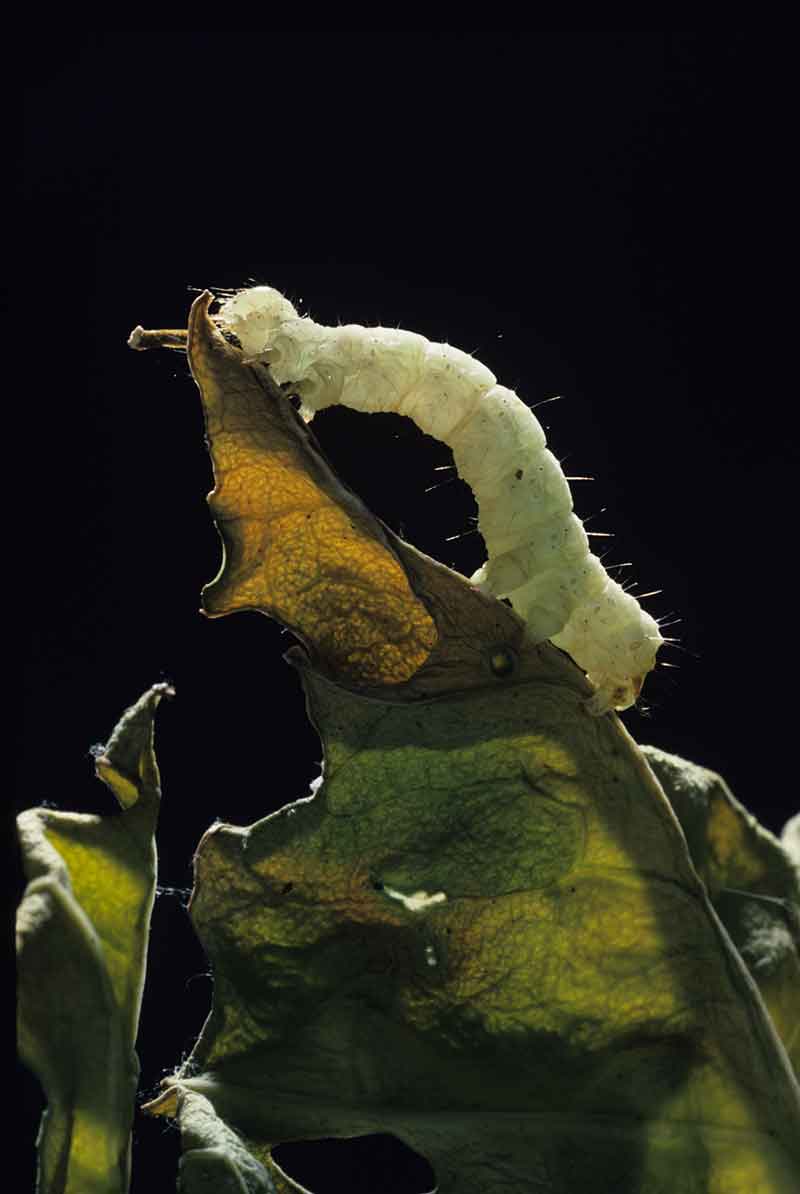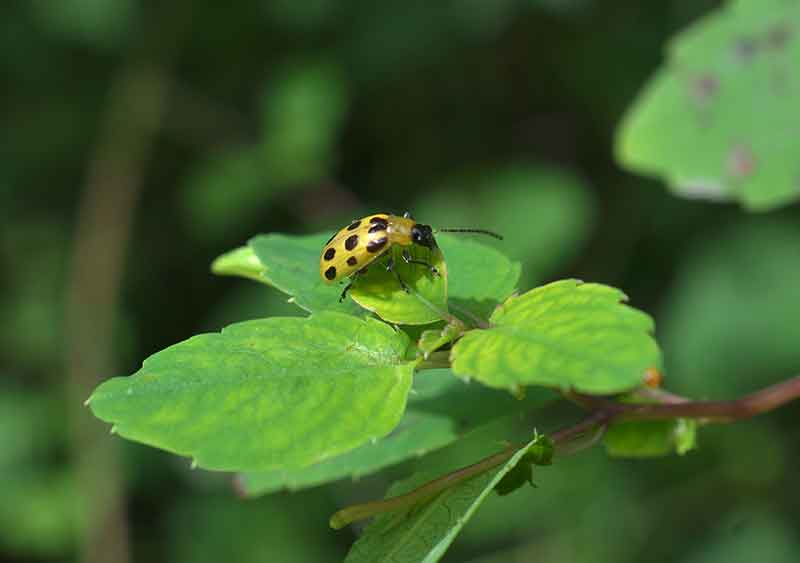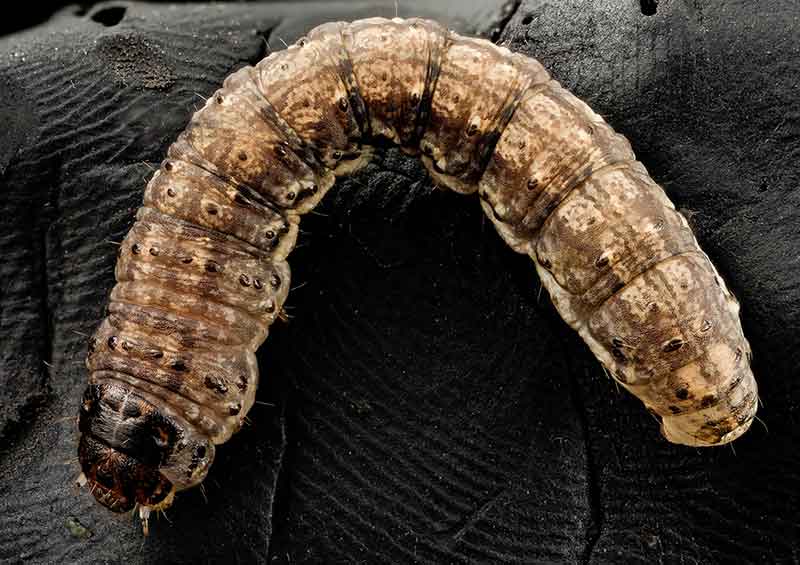How to Protect Vegetables From Fall Insects
Late-season vegetable gardens are known for their abundance, but sometimes vegetables aren't the only things in big supply. Many insect pests strike hardest right before harvest, when veggies are at their delectable peak. New generations of pests build through summer and raise the pressure on gardens in fall. Know what to expect from these late-season pests, and you can meet their threat — and still enjoy your harvest on time:
- Aphids
- Cabbage Loopers
- Colorado Potato Beetles
- Corn Earworms (aka Tomato Fruitworms)
- Cucumber Beetles
- Cutworms
- Stink Bugs
Aphids
If aphids strike, beneficial insects such as lady beetles and lacewings can help. But aphid populations can soar in late summer, when weather conditions favor these pests. These small, pear-shaped, soft-bodied insects pierce plant parts and suck out the fluids inside, excreting honeydew and causing sooty mold in the process. Aphids give birth to live, hungry young. These newborns can reproduce seven to 10 days after birth.1 Aphid damage peaks as temperatures cool. By fall, their staggering numbers can impact every vegetable in your garden and garden roses as well.
Cabbage Loopers

Cabbage loopers riddle vegetable leaves with holes.
These leaf-feeding caterpillars relish chewing on leaves of plants such as cabbage, kale and bok choy, but they don't limit themselves to cool-season cole crops. They're equal opportunity destroyers, attacking tomatoes, cucumbers and potatoes, too. From white- to pale-green with whitish stripes, cabbage loopers arch like inchworms as they eat their way through your vegetables. They leave ragged holes in leaves and bore into cabbage heads, putting an end to your homemade sauerkraut plans. With several generations per season, looper populations peak in fall.2 In moderate climates, reproduction continues year-round.
Colorado Potato Beetle

Colorado potato beetles are the leading pest of potatoes.
Potatoes and related crops, such as tomatoes and eggplants, bear the brunt of damage from the Colorado potato beetle, a serious pest to fall vegetable gardens. Red larvae with black spots and black-striped yellow adults defoliate plants and keep potato tubers from growing. Female Colorado potato beetles emerge from soil and lay up to 350 eggs.3 With multiple generations possible, late-season gardens face all stages of this pest at once, from eggs and larvae to voracious adults.
Corn Earworms (aka Tomato Fruitworms)

Two common names, but one nasty pest: corn earworm and tomato fruitworm.
The worm that wiggles its way into your sweet corn ears is the same pest that burrows into homegrown tomatoes, right when you're ready to pick. Corn earworm and tomato fruitworm are two common names inspired by this single pest's favorite targets. Known by its alternating stripes of dark and light tan, this pest builds over summer months as new generations come every 28 to 35 days.4 Late-season corn crops and the year's final bounty of tomatoes are crops most at risk.
Cucumber Beetles

Spotted cucumber beetles wreak havoc in late-season gardens.
Whether spotted or striped, cucumber beetles do heavy damage in the larval and adult stages, attacking melons, cucumbers, eggplants, beans and other crops. These pests overwinter in weedy areas, then lay their eggs in soil near plants. Hatching larvae feed on the roots of garden crops for up to six weeks. As larvae mature, adult beetles inflict damage above ground, and produce several generations through each growing season.5 Cucumber beetles harm roots, stems, leaves, flowers and skins. They also spread bacterial and viral plant disease. Weed cleanup helps prevent future problems.
Cutworms

Greasy black cutworms reveal their hiding places come nightfall.
Wilted veggies and partially or completely cut stems are the cutworm's calling cards. Late-season seedlings and transplants meant for fall harvests are especially vulnerable. These elusive pests spend their days in soil and come out at night and on cloudy days. Cabbage, carrots, lettuces and peppers are just a few of the plants they harm. One adult can lay hundreds of eggs per season. In northern climates, three generations per year are common, but southern gardens may host several more.6 Cutworms overwinter as larvae in the soil, so tilling your garden in fall and spring helps reduce carryover.
Stink Bugs

Stinkbugs destroy vegetable gardens, and then try to enter your home.
Gardeners and homeowners dread the arrival of this pest's odorous autumn onslaught. Numerous stink bug species trouble late-season crops from cabbage and peas to beans and okra. Young bugs change appearance repeatedly as they go through several stages before maturing to brown or green. Regardless of color, they share the same shield-like shape and offensive odor. Stink bugs hang out in weedy garden perimeters, so good garden sanitation is key to control. These pests can have several generations, plus they're known to invade homes come winter.7
With late-season vegetable gardens, there's no time to replace lost crops. Effective fall control means killing the pests, but keeping your upcoming harvest edible. With Sevin Insect Killer Concentrate and Sevin Insect Killer Ready To Spray, you can protect your vegetables and eat them, too. Tough on pests, but gentle on gardens, these two liquid pesticides kill all these late-season vegetable pests and more. Plus they treat many vegetables, including garden favorites such as tomatoes, peppers and cabbage, right up to one day before your harvest.*
Sevin Insect Killer Ready To Use 2, available in three conveninet sizes, kills more than 700 listed pests on contact, without harming plants or blooms.
When late-season pests threaten to steal your harvest, put an end to their plans with help from trusted Sevin insecticides and the GardenTech family of brands. Control late-season vegetable pests, enjoy your sun-ripened vegetables right on schedule and rest easy knowing your garden's bounty is protected.
* Always read product labels thoroughly and follow instructions, including guidelines for listed plants and pests, application frequency and pre-harvest intervals (PHI) for edible crops.
GardenTech is a registered trademark of Gulfstream Home and Garden, Inc.
Sevin is a registered trademark of Tessenderlo Kerley, Inc.
Sources:
1. M.E Barbercheck, “Biology and Management of Aphids in Organic Cucurbit Production Systems," Penn State University, July 2014.
2. E.T. Natwick, “Cole Crops - Cabbage Looper, "University of California Statewide Integrated Pest Management Program, October 2016.
3. D. Ragsdale, et al., “Colorado Potato Beetles in Home Gardens," University of Minnesota, 2007.
4. Missouri Botanical Garden, “Tomato Fruitworm/Corn Earworm."
5. UC IPM Statewide Integrated Pest Management Program, “Cucumber Beetles," University of California.
6. J. Hahn and S. Wold-Burkness, “Cutworms in Home Gardens," University of Minnesota Extension.
7. University of Maryland Extension, "Stink Bugs - Edibles."
Get Monthly Gardening Advice!





